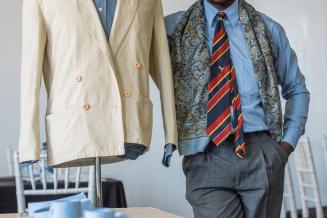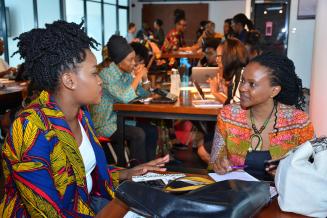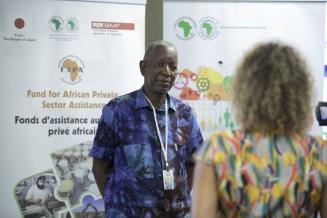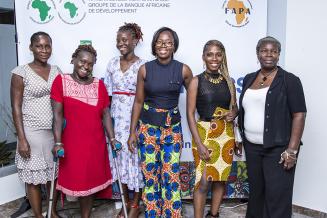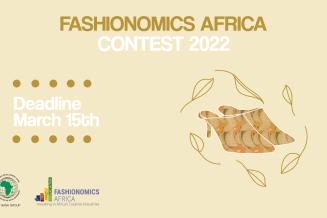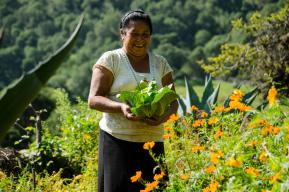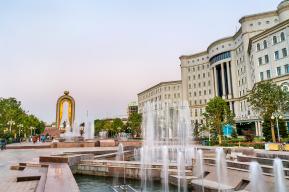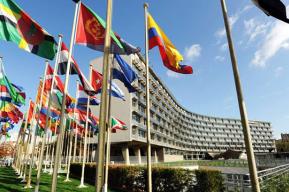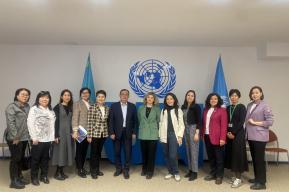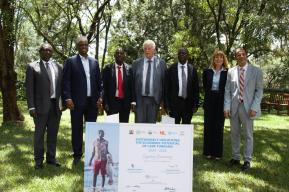Article
Interview with Emanuela Gregorio, Economist and Coordinator of Fashionomics Africa
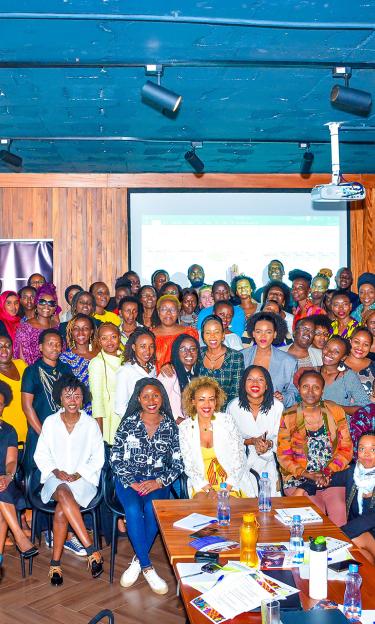
1. How did the idea of Fashionomics Africa come about? Tell us about your personal motivation.
I’m an economist by training and I’ve spent my career working in the private sector, and for international organizations focusing on development in Africa.
I like to say that I was lucky enough to be in the right place at the right time. Back in 2015, my previous manager —Ms. Geraldine Fraser-Moleketi, former Vice President and Special Envoy at the African Development Bank, who was also a cabinet minister under the Mandela government in South Africa — had the great vision to explore the economic opportunities of the cultural and creative industries and to tap into the potential to create jobs, especially for women and youths.
Since then, I’ve been so passionate and determined to contribute to the development of the cultural creative industries sector on the continent through an ecosystem approach. This is when we developed the Fashionomics Africa initiative. We literally started with nothing but now, the African Development Bank has identified the cultural and creative industries, notably the fashion industry, as a high-growth emerging sector with significant potential for job creation and economic diversification for African economies and their people. We succeeded to keep up the momentum thanks to the leadership of our senior management represented by President Akinwumi Adesina who has been one of the biggest advocates for Africa’s Cultural Creatives Industries investments. The Bank has also mobilized strategic public and private sector partners to help in implementing the program, which aims at supporting micro-small and medium sized enterprises operating in the textile and fashion industry in accessing finance, markets, market intelligence and technical assistance for capacity building to boost and scale up their businesses.
A culture of peace uses its nation’s heritage and creativity to protect its collective society against harms such as war, conflict, and violence to benefit from social, economic, and political advancements.
2. How does Fashionomics (and creative industries more broadly) contribute to the promotion of the culture of peace in Africa?
At Fashionomics Africa, we contribute to the culture of peace in Africa by investing in cultural and creative industries, particularly by supporting small to medium enterprises operating in the textile, apparel, and accessories sectors, with a focus on women and youth empowerment.
We aim to increase Africa’s participation in the global fashion and textile value chain to reveal the unique opportunity to promote African culture and local know-how, in addition to accompanying countries to pursue industrialization and boost intra-regional trade.
In order to preserve peace, it is vital to increasingly integrate values and attitudes that will allow communities to build a strong sense of common identity through shared culture and heritage, whilst stimulating social and economic development to create more employment opportunities.
3. According to you, what are the biggest challenges the fashion industry faces on the continent, and what can be done to improve its conditions? What is the weight of the Fashion industry and creative industries for the African economy?
According to Fashionomics Africa’s recent studies, African-based fashion industries are facing great challenges regarding weak business environments, a scarcity of skilled and unskilled workers, a high cost of production, lack of credibility in the eyes of financiers and investors including poor infrastructure.
Therefore, fashion and textile manufacturing industries need to receive government support in terms of appropriate regulatory frameworks for the ecosystem to thrive and dedicated investments to build these high-growth value chains.
In our opinion, these quick wins have been quite helpful in shedding light on the potential of African fashion industries to deliver and thus gaining attention from foreign markets as a result. Nevertheless, our initiative aims to target key market failures by increasing access to finance and markets, market intelligence, and capacity building through our platform to establish an environment that is conducive for long-term progress.
4. How in your view can the Alliance of Partners of the Biennale contribute to the advancement of this thematic for the continent? What can be the role of the Bank?
The Alliance of Partners of the Biennale has power and agency by bringing together organizations and institutions which have the knowledge and capacity to bring long-term change for the permanent integration of a culture of peace within African societies.
In summary, we see the importance of continuing to leverage from our networks and exchange on best practices. Our leading priority at the African Development Bank is to identify, target, and invest in areas within cultural and creative industries that would lead us to advance on this theme.
5. The AfDB is launching the 2nd Edition of the Fashionomics Africa online Contest. Can you tell us more about this competition and what are the conditions to apply?
It is well known that the relationship between the fashion industry and the environment is quite mixed. On the one hand, the fashion industry is a resource-intensive section that has adverse effects on human health and the environment. The collective and global awareness of the industry's hazardous effects on the environment is allowing the current linear take-make-dispose model characterized by rapid and endless consumption, to give way to a more circular and inclusive fashion value chain. In this context, Fashionomics Africa launched its second online contest under the theme of sustainability and circular economy actions, with the objective of:
- Promoting sustainable and circular actions.
- Highlighting some of the best designs on the continent: outfits, accessories for footwear – with the most sustainable and innovative features: materials used, design process, production process, shipping, footprint, etc.
The contest is rolled out in collaboration with the United Nations Environment Programme, Parsons School of Design, strategic consulting and communications agency BPCM, and the Ellen MacArthur Foundation. It offers $6,000 total in cash prizes, mentoring, new branding packages and other support for winning African designers of sustainable and circular fashion. We are encouraging designers and entrepreneurs over 18 years old and based in Africa to submit their proposals with original concepts and ideas that respond to the following criteria:
- Originality and use of more sustainable materials (e.g., recycled, organic)
- Design of durable, recyclable garments
- Cleaner/ greener production techniques (e.g., safer chemicals, less waste)
- Original ways to reduce the carbon footprint
- Life of the product: Product’s durability and measures taken to reduce waste and to extend the product's lifetime
The Deadline to submit applications is March 15th, 2022.
To learn more about the Fashionomics Africa Online Contest or to submit an entry, click here.




